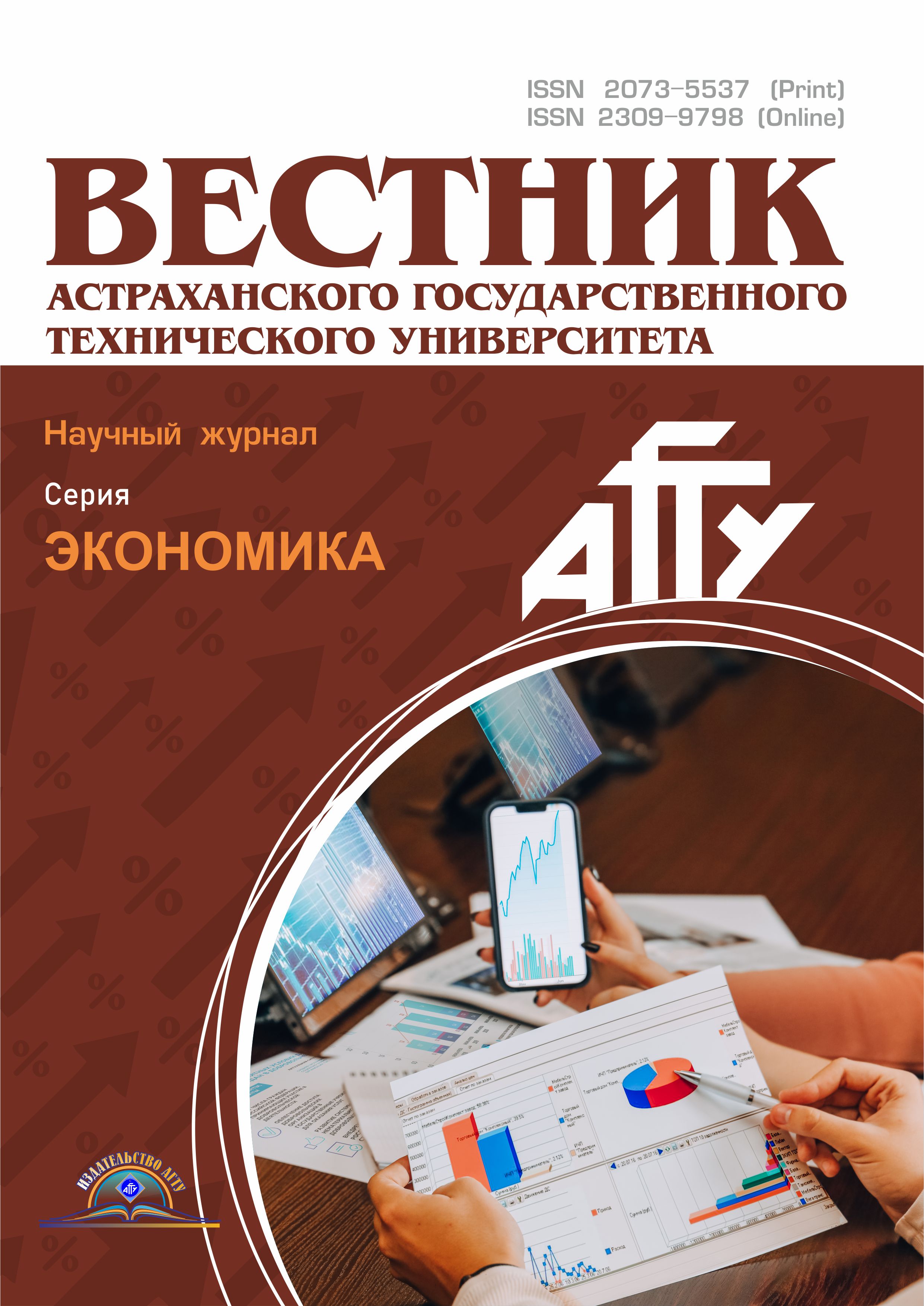ВАК 08.00.10 Финансы, денежное обращение и кредит
УДК 334.7.012.62/.64:[330/101/541:330.142/.143]
ГРНТИ 06.52 Экономическое развитие и рост. Прогнозир-ние и планирование экономики. Экономич. циклы и кризисы
ГРНТИ 06.61 Территориальная структура экономики. Региональная и городская экономика
ГРНТИ 06.81 Экономика и организация предприятия. Управление предприятием
ГРНТИ 65.01 Общие вопросы пищевой промышленности
ГРНТИ 82.01 Общие вопросы организации и управления
ГРНТИ 83.01 Общие вопросы статистики
Ранее основной задачей компании было максимизировать прибыль. В настоящее время ценностные ориентации меняются и компании хотят добиться максимизации своей стоимости. Стоимость компании является важным инструментом управления, поскольку она представляет собой всестороннюю оценку, способную повлиять на конкурентоспособность и достижение прогресса. Для определения стоимости необходимо знать экономические показатели компании, ее положение на рынке, организационную структуру и т. д. Помимо количественных факторов, важны также и макроэкономические факторы, не подлежащие расчету. Стоимость компании зависит от уникальности и качества предлагаемого продукта, рынка, на котором компания оперирует, уровня контроля над затратами, эффективного использования ресурсов и пр. Стоимость компании находится также под влиянием, например, человеческого капитала, информационных систем, экологического контроля и инновационности. Общая стоимость - это не просто сумма значений отдельных активов. Общая стоимость в конце периода планирования должна быть выше, чем ее промежуточное значение. Такую стоимость нам нужно знать, например, для продажи или покупки, для появления новых акционеров, слияния, наследования, ликвидации и на случай появления нового партнера. Есть целый ряд методологических подходов к определению стоимости компании: метод учета, имущественный метод, методы расчета по доходам, методы определения роста валютного курса, комбинированный метод. Представлены теоретическая характеристика и математическое обоснование методов притока свободных денежных средств в фирму и увеличения ее собственного капитала. Целью этой теоретической работы является характеристика стоимости компании и методов ее определения.
стоимость компании, максимизация прибыли, свободный денежный поток в фирму, приток денежных средств в собственный капитал
1. Homolka J., Fabera J. Development Evaluation of Enterprises in Czech Agriculture. Littera Scripta, 2013, vol. 6, no. 2, pp. 18-34.
2. Jarina L., Bodorova Z. Company performance management. Ekonomicko-manazerske spektrum, 2011, vol. 5, no. 2, pp. 18-23.
3. Majercak P., Majercakova E. The enterprise valuation and categories of the value. In Proceedings of 9th International Scientific Conference "Financial Management of Firms and Financial Institutions". Czech Republic, Ostrava, 2013. Pp. 469-475.
4. Tong X. The Concept of Enterprise Value and its Management System Design. In Proceedings of the 3rd International Conference on Product Innovation Management. China, 2008. Pp. 555-560.
5. Loan I. B., Luliana B. N. The enterprise value is a performance indicator of the managers' activity and a signal for the investor. In Proceedings from Conference: 6th International Conference on the Management of Technological Changes. Greece, 2009. Pp. 413-416.
6. Yang Y., Li B. A discussion on enterprise value and its creation. In Proceedings of 2005 International Conference on Innovation & Management. China, 2005. Pp. 882-885.
7. Bircea I., Bircea N. I. Enterprise value, measure of performance management. Review of International Comparative Management, 2009, vol. 10, no. 1, pp. 202-207.
8. Vochozka M., Rowland Z., Vrbka J. Financial analysis of an average transport company in the Czech Republic. Nase More, 2016, vol. 63, no. 3, pp. 227-236.
9. Marik M. Valuation methods: the valuation process, the basic methods and procedures. Prague: Eko-press. 2003. 402 p.
10. Xu J. The research of enterprise value improvement way. In Proceedings from Conference: International Conference on Economic, Education and Management. China, 2011. Pp. 298-301.
11. Wang X. W., Hong M. A study on the connotation of enterprise value. In Proceedings of the 2004 Inter-national Conference on Management Science &Engineering. China, 2004. Pp. 2185-2189.
12. Markova V., Lesnikova P. Strategic level of sustainable development of enterprises. Ekonomicko-manazerske spektrum, 2015, vol. 9, no. 1, pp. 9-15.
13. Gioacasi D. New engine of enterprise value: nonfinancial factors. A case study on european companies. In Proceedings of the 2nd International Conference on Globalization, Intercultural Dialogue and National Identity. Tirgu Mures, Romania, 2014. Pp. 136-143.
14. Vrchota J. Performance as a key competence. Littera Scripta, 2013, vol. 6, no. 2, pp. 139-149.
15. Chudarkova S. Human Capital as a Source of Enterprise Value. In Proceedings of the 21st International-Business-Information-Management-Association Conference on Vision 2020: Innovation, Development Sustainability, and Economic Growth. Austria, 2013. Pp. 1357-1367.
16. Slaba M. Stakeholder profile and stakeholder mapping of SMEs. Littera Scripta, 2016, vol. 9, no. 1, pp. 123-139.
17. Lou R., Xue S. Information Systems, Human Capital, and Enterprise Value. In Proceedings of the Tenth Wuhan International Conference on E-Business. China, 2011. Pp. 556-566.
18. Hang S., Chunguang Z. Does environmental management improve enterprise's value? - An empirical re-search based on Chinese listed companies [Online]. Ecological Indicators, 2015, vol. 51, pp. 191-196. Available at: http://doi.org/10.1016/j.ecolind.2014.08.020.
19. Zhang Y., Gao W. Do These Local Efficiency Variables Influence Enterprise Value? In Proceedings of the 7th International Conference on Financial Risk and Corporate Finance Management. USA, 2015. Pp. 102-105.
20. Jac I., Sedlar J., Zaytsev A., Zaytsev A. Specificity of Forming the Incremental Value of a High-Technology Enterprise on the Basis of Implementing Innovative Managerial Techniques. In Proceedings of the 12th International Conference Liberec Economic Forum 2015. Czech Republic; Liberec, 2015. Pp. 272-285.
21. Reznakova M. Effective finance for business development. Prague: Grada, 2012. 144 p.
22. Marinic P. Planning and creation of company value. Prague: Grada, 2008. 240 p.
23. Majercikova V., Bartosova V. The methodology for determining the value of a company. Ekonomicko-manazerske spektrum, 2012, vol. 6, no. 1, pp. 94-99.
24. Synek M. Managerial economics (5th ed.). Prague: Grada, 2011. 480 p.
25. Wöhe G., Kislingerova E. Introduction to corporate economy (2nd ed.). Prague: C.H. Beck, 2007. 928 p.
26. Kislingerova E. The value of the company, its measurement and control. Acta Oeconomica Pragensia, 2005, vol. 13, no. 4, pp. 10-19.
27. Mielcarz P., Mlinaric F. The superiority of FCFF over EVA and FCFE in capital budgeting [Online]. Economic Research-Ekonomska Istraživanja, 2014, vol. 27, no. 1, pp. 559-572. Available at: http://doi.org/10.1080/1331677X.2014.974916.
28. Kislingerova E. Enterprise valuation. Prague: C.H. Beck, 1999. 304 p.















